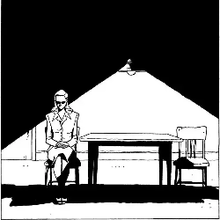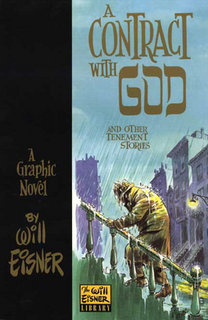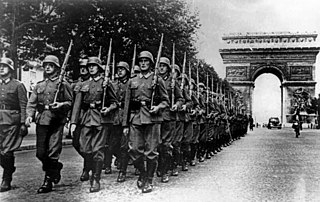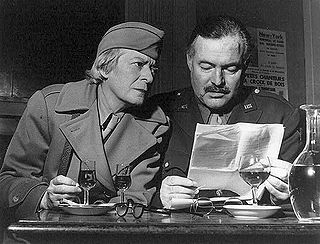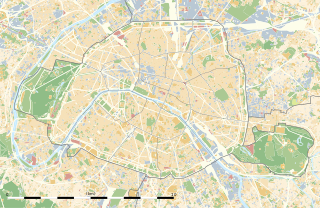Moving Pictures may refer to:
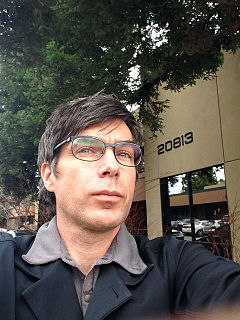
Patrick Sean Farley is a freelance illustrator and Web page designer. Known as a pioneer of webcomics as a medium, Farley works out of Oakland, California.

Enigma is an American comic book series written by Peter Milligan, with artwork by Duncan Fegredo, featuring a superhero named "The Enigma". It was published as an eight-issue limited series by Vertigo, an imprint of DC Comics, in 1993.

Salamander Dream (ISBN 0-9721794-9-6) is an original graphic novel by Hope Larson, her first, released by AdHouse Books in 2005. The story about a young girl and a magical salamander was inspired by Larson's youth playing in nature, and it was originally released as a webcomic.

Making Comics: Storytelling Secrets of Comics, Manga, and Graphic Novels is a book by comic book writer and artist Scott McCloud, published by William Morrow Paperbacks in 2006. A study of methods of constructing comics, it is a thematic sequel to McCloud's critically acclaimed books Understanding Comics and Reinventing Comics.
Gorilla Comics was a short-lived American comic book imprint launched in 2000 by creators Kurt Busiek, Tom Grummett, Stuart Immonen, Karl Kesel, Barry Kitson, George Pérez, Mark Waid, and Mike Wieringo. Characters were creator-owned, and books were published through Image Comics.
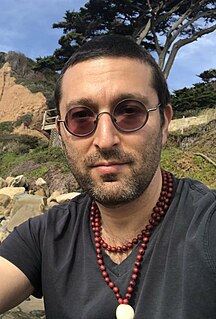
Dan Goldman is an American writer, artist and producer living in Los Angeles. With a career spanning graphic novels, screenwriting, video games and augmented-reality, he is the creator of critically acclaimed works such as Shooting War, Red Light Properties and the Priya's Shakti series. He is the founder and Narrative Lead of the Los Angeles-based Kinjin Story Lab.
Pictures for Sad Children is a 2007 webcomic, created by an artist who was credited as John Campbell. The webcomic, about a ghost named Paul, featured a spare and minimalist black-and-white artstyle and depressive, nihilistic themes. In 2012, Campbell launched a highly successful Kickstarter campaign to publish a print collection of the webcomic. However, Campbell was not able to ship all of the copies to backers, and emails from fans asking when their book would arrive eventually led Campbell to burn a portion of the remaining books. After Pictures for Sad Children was taken offline in 2014, a fan community rose up to share pages and other content from the webcomic.
Bad Machinery is a webcomic written and drawn by John Allison and set in the fictional West Yorkshire town of Tackleford, England. Bad Machinery started on 21 September 2009 loosely based on characters and situations from John Allison's previous webcomic, Scary Go Round. New full colour paneled pages appeared four times a week.

Johnny Wander is a former webcomic written by Ananth Hirsh and illustrated by Yuko Ota. It was published bi-weekly. In its earlier days, the comic generally focused on slice of life stories involving Ananth, Yuko, and their friends and family following graduation from college. However, the comic occasionally encompasses unrelated fantasy storylines. The comic is currently focusing on one of its ongoing fictional storylines, "Barbarous." The name "Johnny Wander" is meant to evoke the creators' desire to use the comic to "wander" through whatever topics interest them at the moment.
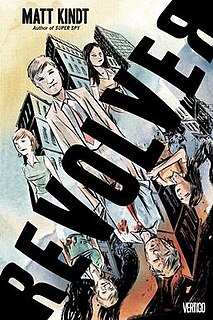
Revolver is a graphic novel created, written, and drawn by Matt Kindt. It was first published in a hardcover format by the Vertigo imprint of DC Comics in July 2010. Kindt's intent was to craft a comic book story in a way that made it unfilmable. Images were created using only blue and brown lines.

Girls With Slingshots is a completed webcomic series by Danielle Corsetto that premiered on September 29, 2004. The series follows several friends as they deal with life events like unemployment, marriage, and their sexuality. Corsetto self-publishes Girls With Slingshots on her website and has released ten volumes of the collected strips through Lulu.com and TopatoCo. Corsetto has received praise for her depiction of LGBTQ characters and characters with disabilities.

Alien: The Illustrated Story or simply Alien, is a sixty-four page critically acclaimed graphic novel adaptation of the 1979 science-fiction horror film Alien published by Heavy Metal magazine in 1979. It was scripted by Archie Goodwin and drawn by Walt Simonson. It is the first comic from the Alien franchise and one of few of the franchises comic publications which is not associated with the long-lasting Aliens line from Dark Horse Comics. The book was a major critical and commercial success and was the first comic to ever be listed on the New York Times Bestsellers list.
Antimony "Annie" Carver is the protagonist of Tom Siddell's 2005 webcomic Gunnerkrigg Court. She was the first character created for Gunnerkrigg Court and her design has evolved alongside the webcomic's artstyle. Characterized as quiet, shy and precocious, as well as lonely and subtly rebellious, Antimony has been praised for her complexity.

Polar is a 2012 webcomic and series of graphic novels written and illustrated by Victor Santos. Featuring "international hitman Black Kaiser", the webcomic is inspired by a variety of action and noir fiction. Polar is characterized by its highly stylized design and complete lack of dialogue, though speech balloons were added in the graphic novel publications by Dark Horse Comics. A live-action film based on the webcomic premiered on Netflix on January 25, 2019.
Paranatural is a supernatural action/comedy webcomic created by Zack Morrison. The comic has been written and illustrated by Morrison since its debut in 2010, with five completed chapters and a sixth chapter currently ongoing. Set in the fictional town of Mayview, the comic follows the Activity Club, a group of middle school students who have the ability to interact with the supernatural world.
